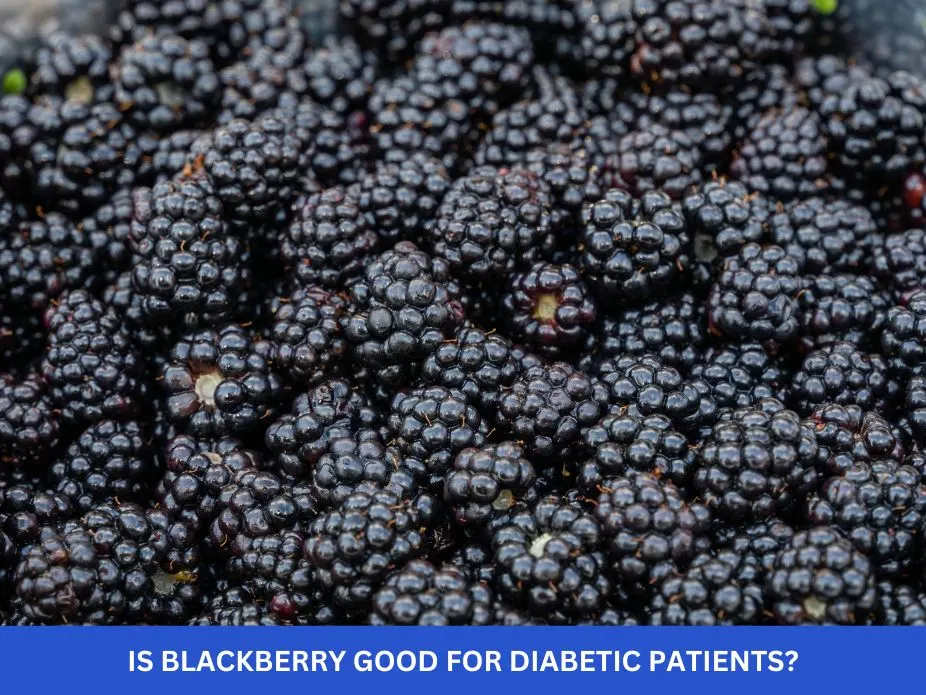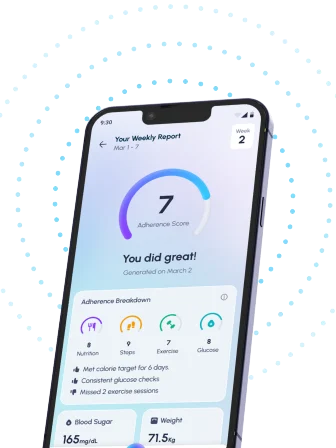Table of Contents
- Understanding and Treating Diabetic Blisters
- Preventative Care: Avoiding Diabetes-Related Skin Issues
- First Aid for Diabetic Blisters: A Step-by-Step Guide
- Diabetic Foot Care: Recognizing and Managing Blisters
- When to Seek Medical Attention for Diabetic Skin Blisters
- Frequently Asked Questions
- References
Dealing with diabetes often means navigating a unique set of challenges, and sometimes, that includes unexpected skin issues. One common yet often overlooked problem is the appearance of diabetes-related blisters. These bothersome blisters can be painful and even lead to infection if not properly managed. This blog post will provide you with essential first aid advice and practical prevention tips to help you keep your skin healthy and comfortable. Let’s explore how to effectively address this complication and improve your overall well-being.
Understanding and Treating Diabetic Blisters
Diabetic foot problems are a serious concern, especially in hot and humid climates prevalent across India and other tropical countries. Nearly 15% of diabetics experience foot ulcers in their lifetime, highlighting the critical need for proactive care. These ulcers can lead to serious complications, including amputations, emphasizing the importance of early detection and treatment of even seemingly minor issues like blisters. Diabetic blisters, often overlooked, can be a warning sign of underlying nerve damage (neuropathy) or poor circulation, both common in diabetes. Swollen feet can also be a symptom, so it’s important to understand the connection between diabetes and swelling. You can learn more about this in our article, Does Diabetes Cause Swollen Feet? Understanding the Connection.
Identifying Diabetic Blisters
Diabetic blisters may appear differently than typical blisters. They might be painless, even if large, due to reduced nerve sensation. They can also be persistent and slow to heal, potentially developing into more serious foot ulcers. Pay close attention to any blisters on your feet, particularly those on pressure points like the heels or toes. The appearance of a blister, its location, and any associated pain or numbness should be evaluated immediately. In tropical climates, increased sweating can exacerbate the risk of infections, making early intervention even more critical.
First Aid and Prevention
Avoid popping or draining a blister yourself. This increases the risk of infection. Instead, keep the area clean and dry, using gentle soap and water. Apply a clean, dry bandage to protect the blister. For prevention, regularly inspect your feet, paying close attention to areas prone to friction or pressure. Wear well-fitting, comfortable shoes, especially those designed to accommodate diabetic feet. Regular foot care, including moisturizing and trimming toenails, is crucial. In India and other tropical regions, consider using breathable socks and shoes to reduce sweat and friction. These preventative measures are especially important when traveling, as discussed in our article on Traveling with Diabetes: Essential Tips for a Safe & Healthy Journey.
Seeking Professional Help
If you notice any unusual blisters or changes in your foot health, consult a podiatrist or healthcare professional immediately. Early intervention is key to preventing complications and preserving foot health. Don’t delay treatment; prompt action can make a significant difference in preventing more serious issues.
Preventative Care: Avoiding Diabetes-Related Skin Issues
Understanding the Link Between Diabetes and Skin Problems
Diabetes significantly increases your risk of developing various skin complications, including blisters. Poor blood sugar control damages nerves and blood vessels, impacting skin health. This is particularly relevant in hot and humid climates prevalent in many Indian and tropical countries, where increased sweating and friction can exacerbate the problem. Remember, up to 80% of Type 2 diabetes cases can be delayed or prevented through lifestyle changes, significantly reducing your risk of these skin issues.
Protecting Your Skin: Practical Prevention Strategies
Maintaining good blood glucose levels is paramount. Regular monitoring, prescribed medication adherence, and a healthy diet are crucial. Additionally, diligent foot care is essential. This includes daily washing with lukewarm water and mild soap, thorough drying, especially between toes, and the use of moisturizing lotions to prevent dryness and cracking, which can lead to blisters. Wear comfortable, breathable footwear, especially cotton socks, to minimize friction. Regularly inspect your feet for any signs of blisters, cuts, or infections. In hot and humid weather prevalent in India and other tropical regions, opt for lighter clothing and footwear to allow for better air circulation and reduce excessive sweating. Promptly address any skin issues you identify to prevent complications. For more information on preventing long-term diabetes complications, check out our guide on How to Prevent Long-Term Complications of Diabetes: Easy Tips.
Seeking Professional Guidance
Regular check-ups with your doctor and podiatrist are vital, especially if you have diabetes. Early detection and management of skin problems, including blisters, significantly improve your overall health and well-being. Don’t hesitate to seek medical attention for any concerns. Taking proactive steps towards preventing diabetes-related skin issues will significantly enhance your quality of life. Remember that protecting your vision is also crucial; learn more in our article on How to Protect Your Vision with Diabetes: Essential Eye Care Tips.
First Aid for Diabetic Blisters: A Step-by-Step Guide
Diabetic neuropathy, often associated with poorly controlled blood sugar (HbA1c levels above 9% are reported in over 30% of diabetes patients), increases the risk of developing blisters, especially in hot and humid climates prevalent in many Indian and tropical countries. These blisters can easily become infected, leading to serious complications. Therefore, prompt and proper first aid is crucial.
Assessing the Blister
First, gently wash your hands and the affected area with mild soap and water. Carefully examine the blister. Is it intact or broken? Is there any sign of infection (redness, swelling, pus)? Do not pop an intact blister, as this increases the risk of infection.
Treating an Intact Blister
For an intact blister, cover it with a sterile, non-stick dressing to protect it from friction and further injury. Change the dressing daily or more frequently if it becomes wet or soiled. Keep the area clean and dry. Consider using a hydrocolloid dressing, readily available in most Indian pharmacies, for optimal blister healing.
Treating a Broken Blister
If the blister is already broken, gently clean the area with saline solution or mild antiseptic, readily available at local pharmacies. Apply a thin layer of antibiotic ointment (consult your doctor or pharmacist for recommendations suitable for diabetic patients) to prevent infection. Cover the area with a sterile, non-stick dressing. Monitor closely for signs of infection.
Prevention in Hot and Humid Climates
In hot and humid Indian and tropical climates, preventing blisters is paramount. Wear breathable, comfortable footwear, preferably socks made of natural fibers like cotton. Regularly inspect your feet for any signs of damage, paying close attention to areas prone to friction. Maintaining good blood sugar control is also vital in reducing the risk of neuropathy and subsequent blister formation. Regular foot checks and proactive care are key to preventing complications. Consult your doctor or podiatrist immediately if you notice any signs of infection or if the blister doesn’t heal within a few days. For more comprehensive advice on diabetic foot care, check out our guide on Top 5 Foot Care Tips for Diabetics | Easy Steps to Healthy Feet. If you’re a parent of a child with Type 1 diabetes, you might find our guide, Tips for Parents of Kids with Type 1 Diabetes: Complete Guide, helpful for managing related challenges.
Diabetic Foot Care: Recognizing and Managing Blisters
Diabetic neuropathy, affecting 30-50% of patients, significantly increases the risk of developing foot problems, including blisters. These seemingly minor injuries can quickly become serious in individuals with diabetes due to impaired sensation and slower healing. In hot and humid climates prevalent in many Indian and tropical countries, the risk is further amplified by increased sweating and friction. Early recognition and proper management are crucial to prevent infections and complications.
Recognizing Diabetic Blisters
Diabetic blisters might appear differently than typical blisters. They may be painless, even if large, due to nerve damage (neuropathy). Look for areas of redness, swelling, or changes in skin texture on your feet, especially between toes or on the heels—common pressure points. Even a small blister, if left untreated, can lead to infection in individuals with diabetes. Pay close attention to any areas that are warm or tender to the touch.
Managing Diabetic Blisters
Do not attempt to pop or drain the blister yourself. This can introduce bacteria and lead to infection. Instead, keep the area clean and dry. Use mild soap and water, gently patting the area dry. Apply a clean, dry bandage to protect the blister from further irritation. In tropical climates, prioritize breathable bandages and footwear to minimize moisture buildup. Regular foot inspections are vital, especially for individuals with reduced sensation. Are you experiencing cracked heels, another common diabetic foot problem? This could be a sign that you need to pay extra attention to your foot care.
Preventing Diabetic Blisters
Prevention is key. Wear well-fitting, comfortable shoes and socks made from breathable materials like cotton. Avoid walking barefoot, especially on hot surfaces. Regularly moisturize your feet, but avoid applying lotion between your toes. Maintaining good blood sugar control is crucial in preventing complications like neuropathy and slow wound healing. If you notice any unusual changes in your feet, consult a podiatrist or healthcare professional immediately. Early intervention can greatly reduce the risk of severe complications. Seeking prompt medical attention is especially important in the Indian and tropical contexts, where infections can spread rapidly due to the climate. And remember, cold feet can also be a sign of underlying diabetic issues, so don’t ignore any changes in your foot temperature.
When to Seek Medical Attention for Diabetic Skin Blisters
Diabetic skin blisters can be a serious complication, especially in hot and humid climates prevalent in many Indian and tropical countries. While minor blisters might heal on their own, certain situations necessitate immediate medical attention. Knowing when to seek help can prevent serious infections and long-term complications. For individuals with diabetes, even a seemingly small blister warrants careful observation, particularly if blood glucose levels are poorly controlled (above 6.5%, indicating diabetes, or even within the prediabetes range of 5.7%–6.4%).
Signs Requiring Immediate Medical Attention:
* Persistent pain or increasing tenderness: A blister that becomes increasingly painful, even after basic first aid, needs professional evaluation. This could suggest an underlying infection.
* Signs of infection: Look for redness, swelling, warmth, pus, or red streaks extending from the blister. These are classic signs of infection, which can spread rapidly, especially in individuals with diabetes whose immune systems may be compromised.
* Blisters that don’t heal within a week: Slow healing is a common sign of poor blood circulation, a frequent complication of diabetes. Delayed healing also increases the risk of infection.
* Large or deep blisters: These are more prone to infection and may require professional drainage to prevent complications.
* Blisters on the feet: Foot ulcers are a particularly serious complication of diabetes. Any blister on the foot, regardless of size, demands immediate medical attention to prevent gangrene. Proper foot care is crucial for people with diabetes in India and other tropical regions, where infections can spread easily. Knowing when to seek help is crucial, much like understanding when to consult a professional for herpes skin rash, as both conditions require prompt attention to prevent complications.
Remember: Prevention is key. Maintaining good blood sugar control, practicing diligent foot care, and promptly addressing any skin issues are crucial for preventing diabetic blisters and their potentially severe consequences. Don’t hesitate to consult your doctor or podiatrist if you have any concerns, particularly in the warmer, more humid climates of India and tropical nations where infections thrive. If you experience other concerning skin issues, it’s important to know signs it’s time to consult a dermatologist for your skin allergies, as timely intervention can significantly improve outcomes.
Frequently Asked Questions
Q1. What are diabetic blisters and why are they dangerous?
Diabetic blisters are a serious complication of diabetes, often painless due to nerve damage (neuropathy). They’re dangerous because they can easily become infected, leading to ulcers and potentially amputation. Hot and humid climates increase the risk.
Q2. How can I prevent diabetic blisters?
Prevention is key! Wear well-fitting shoes and breathable socks. Inspect your feet daily, paying close attention to pressure points like heels and toes. Maintain clean, dry feet, and use protective bandages if needed. Good blood sugar control and regular podiatrist visits are also crucial.
Q3. I have a blister. What should I do?
Do not attempt to drain the blister yourself. Keep it clean and dry, and cover it with a protective bandage. Seek immediate medical attention if you experience any pain, notice signs of infection (redness, swelling, pus), the blister doesn’t heal within a week, or if it’s large or deep.
Q4. When should I see a doctor about a diabetic blister?
See a doctor immediately if you have persistent pain, signs of infection (redness, swelling, pus), a blister that doesn’t heal within a week, a large or deep blister, or any blister on your foot. Regular check-ups with your podiatrist are also vital for early detection.
Q5. What role does blood sugar control play in preventing diabetic blisters?
Maintaining good blood sugar control is paramount in preventing diabetic blisters and other complications. It’s a key factor in overall foot health and reducing your risk of infection.
References
- What is Diabetes: https://www.medschool.lsuhsc.edu/genetics/docs/DIABETES.pdf
- A Practical Guide to Integrated Type 2 Diabetes Care: https://www.hse.ie/eng/services/list/2/primarycare/east-coast-diabetes-service/management-of-type-2-diabetes/diabetes-and-pregnancy/icgp-guide-to-integrated-type-2.pdf




